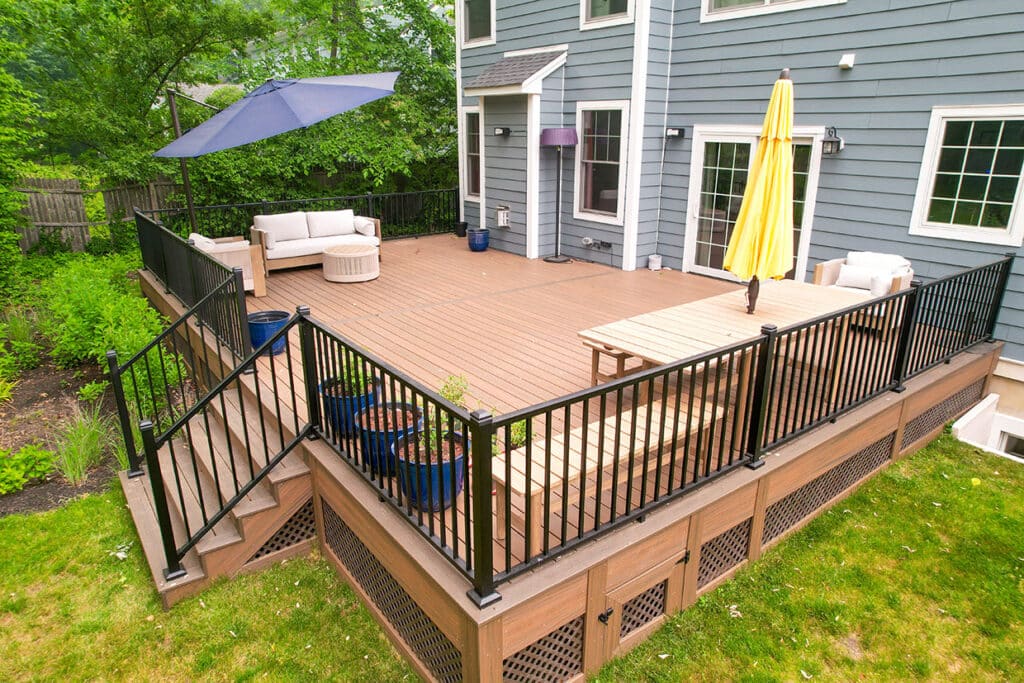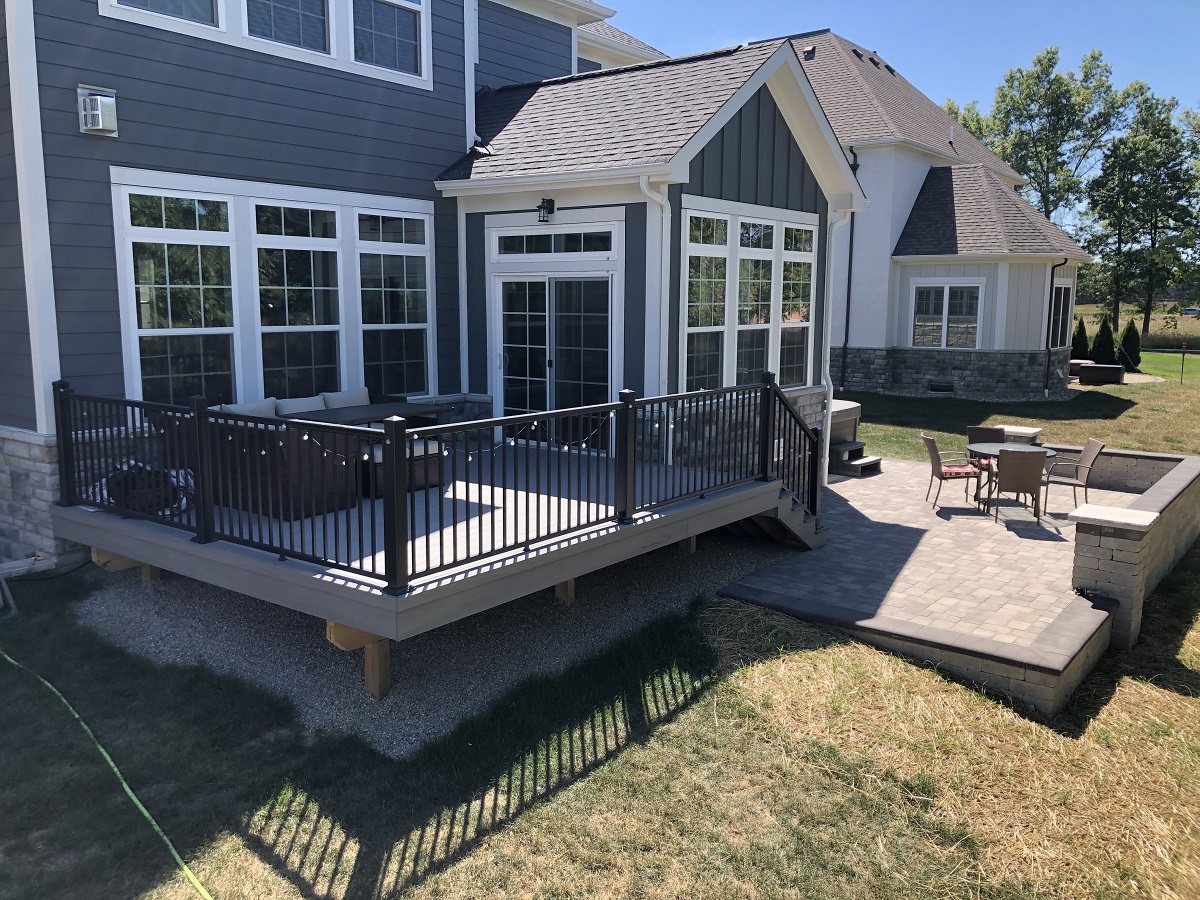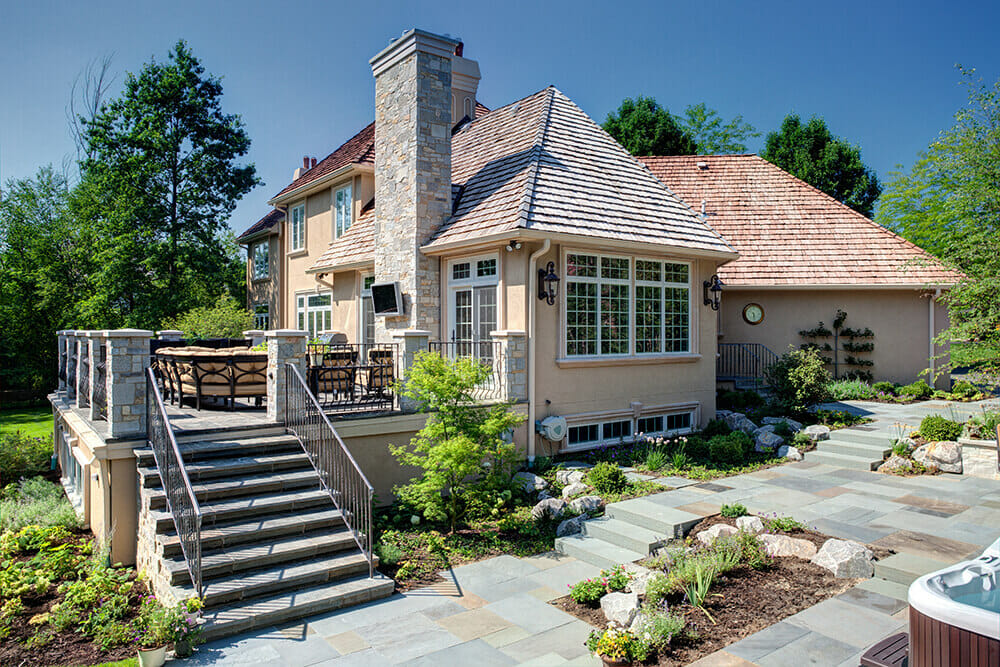Deck contractors reveal the most common errors during deck installation
Deck contractors reveal the most common errors during deck installation
Blog Article
Step-by-Step Insights Into the Setup Refine of a Customized Deck
When you're thinking about a custom deck installation, it's vital to approach the process systematically. You'll begin by envisioning a style that suits your way of life and space. As soon as you have actually obtained that pin down, gathering the best products and tools becomes your following emphasis. There's more to it. The groundwork you lay will certainly establish the phase for an effective build. Allow's check out the important steps that comply with to ensure your deck turns out simply as you thought of.
Preparation Your Deck Layout
When you start planning your deck layout, it's vital to review both your way of living and the area offered. Think about exactly how you plan to make use of the deck.
Following, take a close take a look at your yard. Step the room and identify any type of obstacles like trees, slopes, or existing structures that might influence your design. Think of circulation and accessibility, ensuring you can quickly relocate in between the deck and your home or lawn.
Selecting materials and colors that match your design will certainly improve your home's overall charm - local deck contractor. By thoroughly assessing these elements, you'll produce a deck that complements your way of living while optimizing your outdoor room.
Gathering Necessary Products and Equipments
After settling your deck design, the following action is collecting the needed products and devices. Beginning by making a listing of all the materials you'll require, including outdoor decking boards, joists, screws, and any kind of railing parts. Do not ignore finishing touches like spots or sealers. It's vital to pick premium materials that match your design and climate conditions.
A framing square and safety and security gear, such as handwear covers and goggles, are also essential for a risk-free installation. If you're utilizing composite materials, a specialized blade for reducing will certainly make your job less complicated.
Preparing the Website for Installment
Prior to you start building your custom-made deck, it's important to prepare the site effectively. Begin by evaluating the location where you plan to set up the deck. Remove any debris, rocks, or plants that could disrupt your job. If there are any type of existing frameworks or barriers, ensure to take measurements and represent them in your plans.
Following, examine the ground's degree. You could require to remove or complete specific areas to ensure a stable structure. If your site has drain problems, think about adding gravel to promote appropriate water runoff.
Last but not least, note the boundary of your deck making use of stakes and string. This will certainly offer you a clear aesthetic reference for the dimensions and design, making the setup process smoother. Taking these preparation steps will certainly set you up for an effective deck setup, seeing to it whatever's in position for the framework.
Mounting the Framework
When you begin mounting the framework for your personalized deck, choosing the right materials is vital for toughness and looks. You'll additionally need to ensure that the structure is set effectively to sustain the structure. Let's review the very best techniques to make this component of the process smooth and reliable.

Choosing the Right Materials
Choosing the right materials for your deck's framework is necessary, as it directly impacts the structure's longevity and longevity. Make particular any kind of products you choose meet regional structure codes and requirements. With the appropriate products in location, you'll establish a strong foundation for your custom deck that lasts for years.
Establishing the Structure Appropriately
To guarantee your customized deck stands the test of time, establishing the structure appropriately is crucial. Begin by marking the deck's format with stakes and string, guaranteeing it's square and degree. Next, dig openings for your grounds at the very least 36 inches deep, listed below the frost line, to prevent moving. Usage concrete to protect the footings, enabling it to cure completely. Once established, attach post supports to the grounds, ensuring they're plumb and lined up. Mount your support beams, making certain they're degree and spaced according to your design. Include joists, adhering to local structure codes for spacing. By taking these steps, you'll create a strong foundation that supports your deck for many years to come.
Putting Down Decking Boards
Putting down outdoor decking boards is a vital step in creating a sturdy and attractive deck. Beginning by picking your boards, validating they're the best length and product for your style. Lay the very first board at one end of the framework, making sure it's lined up with the edge. Usage deck screws or hidden bolts to safeguard it in position, keeping it perpendicular to the joists beneath.
Use a chalk line to lead your placement, helping you maintain every little thing straight. As soon as all your boards are down, provide every little thing an once-over to validate it's secure and well-aligned prior to relocating on to the following actions.
Adding Completing Touches
After securing your outdoor decking boards, it's time to include those completing touches that enhance both the appearance and capability of your deck. Begin by mounting barriers for safety and security and design. Pick a design that matches your home and suits your preference. Next, consider adding message caps; these not only safeguard your barrier messages but additionally add a decorative component.
Do not forget illumination! Setting up LED lights along the actions or under the railing can produce a warm and welcoming ambience for night gatherings. Ultimately, apply a water-repellent sealer to safeguard your deck from dampness and UV damage, guaranteeing its longevity.
You may also intend to include planters or ornamental components to personalize your room. With these finishing touches, your personalized deck will not just be useful however additionally a stunning expansion of your home, all set for relaxation or enjoyable. Appreciate your brand-new outside sanctuary!
Preserving Your New Deck
To more info keep your new deck looking wonderful, you'll need to remain on top of routine cleaning. Seasonal upkeep is essential to safeguard it from the aspects. Let's check out some simple tips to help keep your deck throughout the year.
Routine Cleaning Up Tips
Keeping your new deck in leading shape needs regular cleaning, and doing so just a few times a year can make a big difference. Stay clear of making use of rough chemicals or power washers, as they can damage the wood. Evaluate your deck for any signs of wear or damage while cleansing, guaranteeing it stays gorgeous and practical for years to come.
Seasonal Upkeep List
As the periods change, it's important to remain on top of your deck's upkeep to preserve its charm and longevity. Clean your deck completely by sweeping away debris and utilizing a gentle cleaner to remove stains. Maintaining this checklist in mind will certainly ensure your deck remains in top shape year-round.

Regularly Asked Questions
What Allows Are Needed for Deck Installment?
You'll normally require a structure license for deck installation, especially if it rises. Check your neighborhood guidelines, as requirements can vary. It's necessary to guarantee compliance to prevent fines or needing to get rid of the deck later.
Just how Lengthy Does the Setup Refine Typically Take?
The installation procedure normally takes one to two weeks, depending on the deck's size and intricacy. You'll intend to factor in weather and any required licenses that can extend the timeline somewhat.
Can I Build a Deck on Irregular Ground?
Yes, you can build a deck on uneven ground. You'll need to appropriately level the foundation, using messages or piers to produce a secure surface area. It's crucial to guarantee security and architectural stability throughout the process.
What Type of Timber Is Best for Resilience?
When it involves resilience, you'll wish to consider woods like teak wood or mahogany. Pressure-treated pine likewise uses great strength and resistance against rot. Just keep in mind to preserve the timber on a regular basis for durable performance.

Exist Any Type Of Seasonal Considerations for Setup?
When you're planning your installment, think about the period. Spring and drop deal mild temperature levels, perfect for working with timber. Prevent extreme heat or chilly, as they can influence the products and your comfort throughout installation.
Report this page